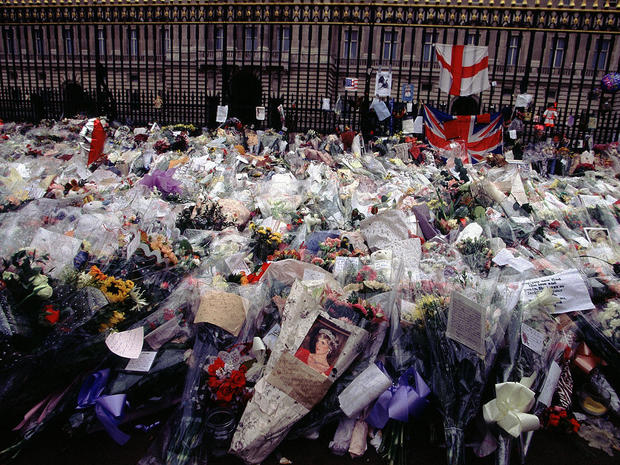▶ Watch Video: Princess Diana’s revolution
This past week the world took note of a sad anniversary: Princess Diana, gone 25 years. Historian and author Amanda Foreman reflects on the enduring legacy of the “People’s Princess”:
True national mourning is a rare thing. I saw it 25 years ago after the death of Princess Diana. In fact, I didn’t just witness it, I was part of it.
Along with tens of thousands of others, I went to Buckingham Palace to lay flowers in honor of Diana’s memory. You couldn’t see an inch of sidewalk. It was just flowers, everywhere. And people, in tears.
It’s strange to have such strong feelings for someone that you never knew. But to understand why the world erupted in grief then, and why she still has meaning today, you have to realize how revolutionary she was.
Diana transformed how we talk about emotions. Until she started being open about her own struggles – which included battling depression and an eating disorder – the whole subject of mental health was completely taboo for most people. She wasn’t afraid to discuss her problems, and to have someone who was so famous and privileged be willing to talk with such honesty helped millions to do the same.
Diana avoided causes that were popular or photogenic to focus on helping some of the most marginalized people in society. At the height of the AIDS epidemic, she challenged the fear and stigma attached to the disease.
On the lighter side, Diana loved fashion. By being unapologetically glamorous, she enabled women to show their femininity and still be taken seriously. And despite the sadness surrounding her divorce, she helped the monarchy to modernize itself.
Looking back, I think that the tears for Diana came from a sense of real loss. She was the “people’s princess” because she became a selfless advocate for the least privileged among us.
The greatest lesson that we can take from her life is that, with courage and honesty, our vulnerabilities and weaknesses can be turned into our greatest strengths.
Story produced by Julie Kracov. Editor: Emanuele Secci.
For more info:
- dramandaforeman.com (Official site)
From the archive:
- The life and death of Princess Diana, hounded by paparazzi (“Sunday Morning”)
- Charles Spencer on Diana, Althorp and the death of kings (“Sunday Morning”)
- Diana still captivates (“Sunday Morning”)
See also:
- August 31, 1997: Princess Diana’s tragic death stuns the world (“CBS Evening News”)
- 25 years after Princess Diana’s death, a friend says if she were still alive, there’d be “no split between Harry and William” (“CBS Mornings”)
- Remembering Princess Diana 25 years later (Video)
- Gallery: The Death of Diana


